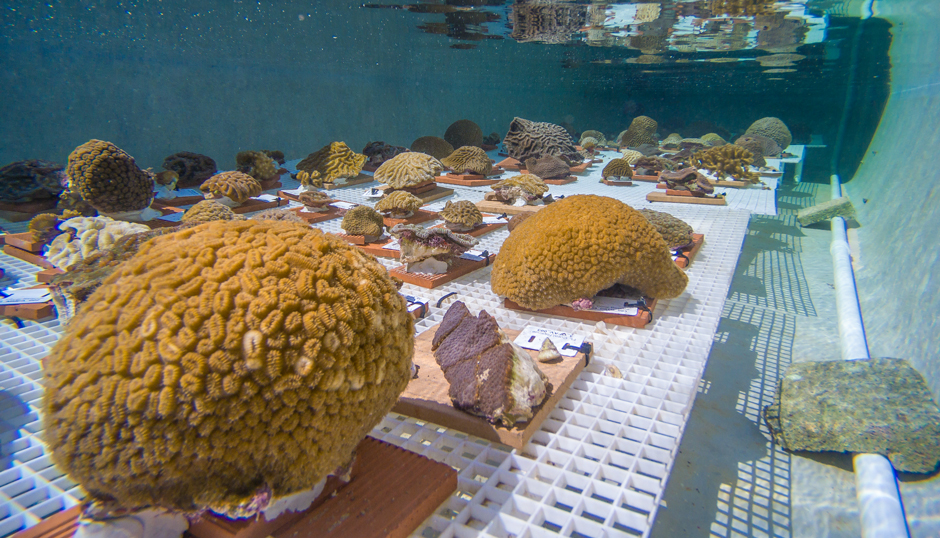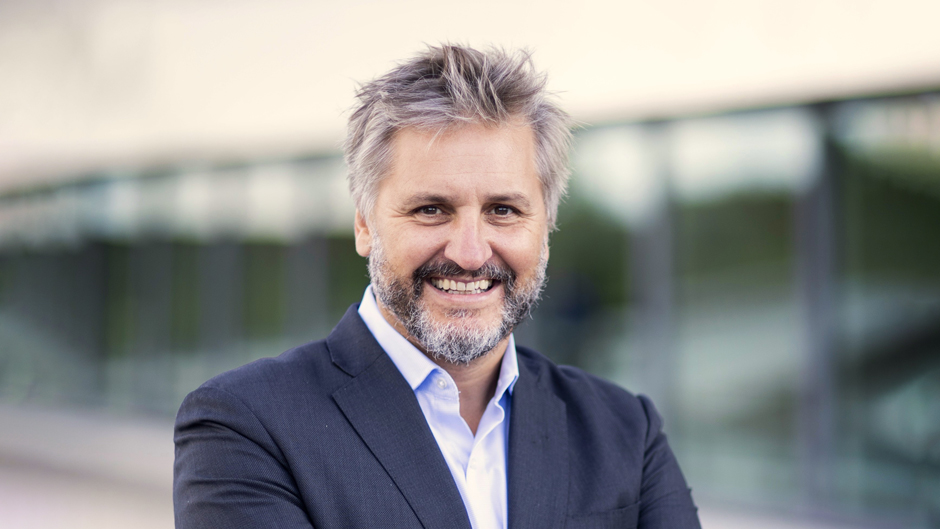Flood waters that turned many of Mumbai’s streets into rivers during the heavy monsoon rains of 2007 taught Michael Berkowitz a lesson in resilience he would long remember.
He was living in Mumbai, heading up corporate security and business continuity efforts for Deutsche Bank, when floods inundated India’s financial capital.
“The water was waist deep in parts of the city, and there was a lot of finger-pointing about how the city was not prepared and how its infrastructure had failed,” Berkowitz recalled. “But what I noticed were people wading through water to get to work, people helping each other in truly remarkable ways. I was impressed with the spirit of the Mumbaikars. I didn’t know it then, but such an ethos is a hallmark of resilience thinking—it’s not just how infrastructure performs, but how society more generally responds to climate shocks.”
Berkowitz took that lesson to heart, assimilating it with others he learned during a brilliant career in risk and resilience that has seen him spearhead initiatives at a multitude of levels.
Now, he has embarked on a new challenge.
Berkowitz, who founded and built the Rockefeller Foundation’s 100 Resilient Cities (100RC) from an idea into an influential global city network, working across 48 countries to help cities around the world become more resilient to physical, social, and economic shocks and stresses, has been named the founding executive director of the University of Miami’s Climate Resilience Academy.
Launched on Earth Day (April 22) in 2022, the academy supports the University’s 12 schools and colleges in their efforts to conduct interdisciplinary research, train the next generation of climate scientists and practitioners, and solve the most pressing problems caused by climate change—all while partnering with industry, government, universities, and other stakeholders.
A $5 million commitment from Eric T. Levin, a former University trustee and the former president of the University’s Citizens Board, which represents business leaders throughout South Florida, made the academy possible.
Berkowitz, who also becomes the Eric T. Levin Endowed Chair in Climate Resilience, begins his new post on Aug. 21.
“A thought leader in resilience” is how Guillermo “Willy” Prado, interim executive vice president for academic affairs and provost, described Berkowitz. “South Florida is often called ground zero for sea level rise. And with the extreme weather our region—indeed, our nation—is now experiencing, Michael’s appointment couldn’t be timelier,” he pointed out.
“A key goal of our new academy is to foster partnership outside the University, to get business, government, nonprofits, and other academic institutions involved in this endeavor,” Prado continued. “Michael is the linchpin in our plans to make that happen. His global network, partnerships with private and public sectors, and experience developing and executing a vision for resilient communities will benefit South Florida, the nation, and beyond.”
Champion of urban resilience
In 2019, with the senior management team of 100RC, Berkowitz helped create Resilient Cities Catalyst (RCC), a global nonprofit that helps cities and their partners change the way they plan and act in the face of climate change. RCC’s on-the-ground efforts range from helping communities in California unlock millions of dollars of climate funding to partnering with Australia’s Minderoo Foundation to design a vision for more resilience in the aftermath of wildfires and floods. Led by RCC’s co-founders, that work will continue.
Fittingly, 100RC supported Greater Miami to unify its resilience work through the creation of Resilient 305, a plan to help local municipalities better prepare for and respond to hurricanes, sunny day flooding, and sea level rise as well as social and economic inequities. “When you think about the worldwide effort to build resilience, there are fewer places where that is more evident and more critical than in South Florida,” Berkowitz said. “It’s not just South Florida’s exposure to climate risks, but it’s the region as a central point of immigration and migration across Latin and North America. It’s this incredible opportunity with a booming economy and a burgeoning tech sector,” he added. “Gentrification, displacement, and vulnerability have occurred in the face of all of that. These are issues that speak to the resilience of a city, of a region, and of a community. And being able to tap into what is a world-class research and teaching institution that is clearly committed to addressing these issues made the University of Miami an attractive place to continue my work in resilience.”
His appointment comes at a time when climatologists and others the world over are warning that the planet is reaching a tipping point in the climate crisis. Earth’s average surface temperature for 2022 tied with 2015 as the fifth warmest on record, and the past nine years have been the warmest since 1880, when modern recordkeeping began, according to a NASA analysis.
The warming climate is leaving its calling card in the form of stronger hurricanes, more intense droughts, more severe wildfires, and ever-rising sea levels. And with the El Niño climate phenomenon, which has a heating effect, in full force this year, 2023 could become the hottest year on record by the time it ends, a group of Berkeley Earth scientists have warned.

The Climate Resilience Academy, Berkowitz said, is the University’s “moon shot” against climate change, with more than 85 institution-wide research projects already underway to address the climate crisis and related resilience issues—from protecting and restoring coral reefs to mitigating the warming climate’s impact on vulnerable populations.
“It’s the academy’s role to connect the amazing work being done by our researchers more effectively to practitioners so that they can, in turn, use and ultimately scale the innovations that are coming out of the University,” Berkowitz said. “And it is our goal to connect those practitioners back into the University so that we can understand the demand signal and what new innovations are needed to tackle problems. If we can create that virtuous cycle of demand informing research and research having an impact in communities, that will be a mark of success for this new academy.”
Pivotal role of students
Students, both at the undergraduate and graduate level, will be an integral part of that cycle, Berkowitz noted.
“Urban resilience as a profession is relatively new,” he explained. “A multitude of people from different disciplines and who are trained in different ways are currently the practitioners of resilience. But we’re hoping that the practitioners of tomorrow—the students—bring a new level of sophistication to it. That they approach it in more interdisciplinary and inclusive ways, thinking not just about the past science but also new possibilities for the future. All of these are hallmarks of resilience thinking. We need to train the future generations of practitioners and leaders, and using Miami and South Florida as a living laboratory to do that is the perfect strategy.”
Berkowitz’s accomplishments while serving as president of 100 Resilient Cities from 2013 to 2019 run the gamut. The 4,000 actions the organization helped spearhead in its partnership with cities resulted in more than 150 collaborations between the private and public sectors, including $230 million of pledged support from platform partners and more than $25 billion leveraged from national, philanthropic, and private sources to implement resilience projects. RCC has built on that legacy, working closely with communities, project owners, and regional stakeholders across the United States and around the world.
Under his leadership, 100RC co-led City Xchange, an effort to connect tech and innovation with cities to solve resilience challenges. And with UN Habitat, the organization led the creation of the Medellin Collaboration on Urban Resilience to align international urban resilience efforts.
100RC, Berkowitz noted, spearheaded the creation of the chief resilience officer, using as a guide a white paper from the Zürich, Switzerland-based, reinsurance company Swiss Re that suggested countries hire chief risk officers. “We amended it to think more about building capacities rather than just understanding the risks that were on the books—that is, we took it a step further, advancing the idea of the interdisciplinary nature of building capacities that could help a city survive and thrive in the face of disaster. And that was the original job description of the chief resilience officer.”

Those positions were originally grant funded by 100RC. Now, as the climate crisis worsens, municipal and county governments across the United States are hiring full-time chief resilience officers to address the impacts of climate change.
But among all of 100RC’s accomplishments, “I’m most proud of the community we built,” said Berkowitz, noting that some who have served as chief resilience officers for major cities have moved on to key positions at federal agencies such as FEMA and the National Oceanic and Atmospheric Administration.
“Of course, Jim Murley, [chief resiliency officer for Miami-Dade County], and Jane Gilbert, [chief heat officer for Miami-Dade], are still doing really important work in Miami through Resilient 305,” said Berkowitz, referring to a plan to help local municipalities better prepare for and respond to hurricanes, sunny day flooding, and sea level rise as well as social and economic inequities.
“It’s not only the community of chief resilience officers we built but also folks in business, in nonprofits, in civil society, and at universities across sectors and silos,” he explained. “There’s this real legacy of a community that is thinking about our risks and opportunities in new and important ways. And part of that is this understanding that resilience is not just about how our infrastructure withstands the initial disaster. If a hurricane hits Miami, it’s important that the infrastructure withstand that, that buildings not collapse, that roads not wash away,” he added.
“But the resilience of South Florida is so much more than that. It’s all these other aspects of how neighbors check on neighbors, how different economic sectors can rebound more quickly and carry the region while recovery happens across the economy. It’s how well the poorest and most vulnerable of our fellow community members can get back on their feet,” he continued. “All these things are the hallmarks of a more resilient community. That wasn’t always understood. It’s much better understood in 2023 than it was in 2013, when we started 100 Resilient Cities. So, that’s the legacy I’m most proud of.”
Storied career
Berkowitz’s career in the field of resiliency is an unlikely one. Following undergraduate study in political science at the University of Delaware, he traveled to Washington, D.C., in hopes of landing a job in politics. “I had no connections in the field of politics, so I just applied for internships wherever I could get them,” he recalled.
He got a job as a reporter for a major newsletter that covered emergency preparedness, reporting and writing stories on emergency management-related topics that affected local and national businesses.
New York City Emergency Management recruited him. And during a seven-year stint that began in 1998 with that office, he worked in various roles. He wrote contingency plans for biological terrorism, extreme heat, and coastal storms. He oversaw the city’s emergency mapping and data center during the response to the 9/11 terrorist attacks, and he responded to other incidents such as the Northeast blackout of 2003 and the West Nile virus outbreak in the New York City area in 1999.
From there, it was on to Deutsche Bank, where for eight years he worked in several key positions for the multinational investment bank and financial services company.
Then came his storied stints as president of 100RC and founding principal of RCC.
Now, the University of Miami gets the founding executive director for its fledgling Climate Resilience Academy.
“Michael brings experience outside of academia,” Levin said. “He’s done great work with 100 Resilient Cities, and he’s had to work with a variety of leaders under different circumstances. He’s built up a lot of resilience himself. So, the experience he brings in building an organization from just the concept to a full-fledged, very effective, very influential organization is valuable for us.”
Levin praised Rodolphe el-Khoury, dean of the School of Architecture, and Sharan Majumdar, a professor of atmospheric sciences at the Rosenstiel School of Marine, Atmospheric, and Earth Science, for serving as the academy’s interim directors and for leading the planning process and defining the mission that established the foundations of the academy.
“They did a masterful job and all of the heavy lifting as far as corralling the faculty and administrators and fleshing out the academy’s ideas, making it possible for us to attract someone of Michael’s stature,” Levin said.
“It has been an honor to co-lead the development of the academy during its fledgling stages,” Majumdar said. “The most fulfilling part has been the integration of ideas generated by students, staff, and faculty, which were supported by our leadership and Eric.”
Berkowitz, added Majumdar, “is poised to nurture the collective enthusiasm and the diverse array of talent across our schools and colleges in collaboration with external partners and stakeholders. As a long-standing leader and founder of organizations in the climate resilience arena, Michael brings a wealth of experience to lead the academy’s vision and its execution. His breadth and depth of connections across multiple sectors will help bolster the University’s reputation through meaningful partnerships, while making a direct contribution to the well-being of society.”
“One of the most exciting aspects of building the Climate Resilience Academy was framing and channeling the University’s enormous capacity in the climate change space. We designed the academy as an instrument for aligning the wealth of talent and resources in tackling big challenges. With years spent in the field, leading a trailblazing resilience program, Michael is perfectly poised for putting this prodigious instrument to good use,” said el-Khoury.

